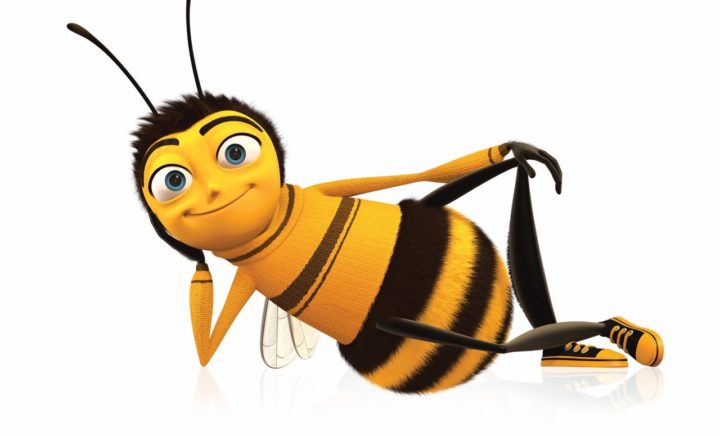These facts include general information, scientific research, historical points, and quirky facts about bees.
Worker bees can survive for up to nine months in colder seasons. They can live for six weeks in summer.
Honey bees are essential pollinators of flowers, fruits, and vegetables. They help plants grow by doing this! The pollen is transferred between the male and female parts of bees, allowing plants to produce seeds and fruits.
These tiny bees are just the beginning. There is so much more! Let’s take a look at some other interesting facts about bees!!
Enjoy these Fun Facts About Bees!

- Bees have five eyes.
- Bees are insects, so they have six legs.
- Drones are male bees found in a hive.
- Bees fly at 20 mph
- The worker bees are female bees found in the hive, except the queen.
- The queen lays 2,000 eggs per day.
- Bees will die if they lose their stinger.
- The existence of bees has been documented for over 30 million years.
- The pollen basket, or corbicula, is a container that contains pollen.
- A beehive average can house around 50,000 bees.
- To make 1 pound honey, foragers need to collect nectar from approximately 2 million flowers.
- In her lifetime, the average forager will make about one-third of a teaspoon of honey
- The average American honey consumption per capita is 1.3 pounds.
- Two pairs of wings are available to bees.
- Pheromones are the main form of communication between honey bees.
- The US has approximately 130 crops that bees pollinate, including fruit, vegetable, and fiber crops. The cost of bee pollination is about 14 billion dollars per year, which helps to improve crop quality and yield.
- All worker bees, however, are female.
- In her lifetime, a bee can produce a teaspoon (about 5g) of honey.
- Three times the distance it takes to produce one kilogram of honey is required by bees to fly around the globe in air miles.
- The honey’s flavor is determined by the type of flower that the bees use to get their nectar.
- Drones, or male bees, have more enormous eyes to find the Queen Bee.
- High up, bees mate. The male bee dies after he loses his reproductive organs.
- Queen Bees can produce up to 2,000 eggs per day. With the help of pheromones, fertilized eggs become females while unfertilized eggs become males.
- You can increase the number of bees in your garden by adding more color.
- Blue is the color of honeybees, and they love to cluster plants such as lavender and rosemary.
- Because they are dying, bees won’t want you to sting them.
- There are more than 20,000 species of bees, and they can be found on every continent but Antarctica.
- Honey is known to provide many health benefits, both when it’s eaten and when it’s applied to the skin. Honey that is darker than usual will be more beneficial.
- Humans can only partially domesticate the bee, which is the only social insect that humans can domesticate.
Also, check out 25 Facts About Guinea Pigs!!
Some Interesting Facts about Honey Bees
- Apis mellifera is the name of the honey bee. Apis, which dates back to ancient Egypt and is related to the Greek word “swarm,” is also an old term. Mellifera in Latin means ‘honey bearing.’
- Only the honey bees’ females can sting. The drones, or male honey bees, are not allowed to sting. However, if you do get stung, it is likely by a worker. Although queen honey bees can sting, they stay close to the honey bee hive, so it is doubtful that you will be stung by a queen honey bee.
- Within 15 minutes, the queen honeybee must be removed from the hive.
- An average honey bee colony could have approximately 50,000 workers.
- The male honey bees (drones) have no father but do have a grandfather.
- The queen honeybee is twice as long as a worker.
- A honey bee queen can lay between 2000 and 3000 eggs per day as she builds her colony.
- Honey bees communicate by pheromones that are passed on to them through their feeding. This is known as ‘trophallaxis.’ Learn more about honeybee communication.
- Drones (male honey bees) die after mating. Poor creatures!
- Foraging honeybees must fly 55,000 miles and visit around 2 million flowers to produce one pound of honey. Find out more about honey bees.
- Honey bees can fly anywhere from 1 to 6 km during a foraging trip, but they also fly up to 13.5km (I have seen it stated that 20km had been recorded, but I have not found the research paper to verify this finding). Learn more about how far honey bees fly.
- Honey bees require a lot of energy. Honey bees can fly up to 15 miles per hour and beat their wings 200x per second, or 12,000 times per minute.
End of the story
That was it! Ahh!! These bees are so fascinating to learn and study about. !
These facts are so amazing! Stay tuned for more. Share this post with your family and friends!!
